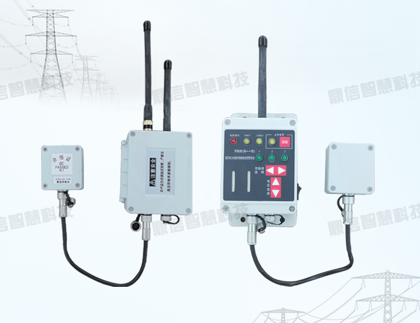With the continuous progress of the project, construction vehicles and high-voltage lines between the "close contact" occurs from time to time, not only threatens the safety of construction personnel, but also to the enterprise has brought great economic losses and schedule delays. "Close to the danger, beware of electric shock", "prohibit construction work under the line" and other warning signs can be seen everywhere, but the actual effect is not satisfactory.
In response to the frequent occurrence of unauthorized construction under high voltage lines, and the resulting serious safety incidents such as electrocution, wire fires, and body fires that may be caused, the introduction of a high voltage power equipment < strong>Non-contact Intelligent Early Warning System (Near Electricity Alarm) program is a positive and effective preventive measure. Through advanced sensor technology and real-time monitoring function, the Near Electricity Alarm is able to send out an alarm immediately when construction personnel or machinery and equipment approach the high-voltage line to a certain dangerous distance, so as to remind personnel to evacuate or adjust the working position in time, and effectively avoid accidents.
Dinstar Wisdom Technology Near Power AlarmCan be reused on multiple vehicles, widely used in cranes, big trucks, fire trucks and other over-height vehicles, its working principle is mainly divided into the following four stages, to ensure the safety of the vehicle operation process:
I. Electromagnetic induction and signal acquisition phase
Electromagnetic induction: the near-electricity alarm is mainly based on the electromagnetic induction principle, set a voltage level and distance in advance, installed in the arm side of the "monitoring end" will detect the high voltage signal in real time.
Signal Acquisition: The sensing device quickly captures the high voltage signal and converts this vital information into a processable electrical signal.
II. Signal processing and judgment phase
Signal Transmission: The collected electrical signals are rapidly and stably transmitted to the Intelligent Early Warning Mainframe (the "receiving end" installed in the driver's cab) through 2.4G wireless communication technology.
Safety distance judgment: The intelligent warning host processes and judges the received signals according to the preset safety distance threshold. Once the distance between the crane and the high voltage power line is close to or reaches the preset safety distance, the system will enter the next stage.
III. Alarm and warning phase
Sound and light alarm: When the result is judged to be dangerous, the intelligent warning host will immediately emit a high-decibel alarm sound to remind the operator's attention, even in the noisy working environment to ensure that the operator can clearly receive the warning message.
IV. Response and avoidance phase
Operator Response: After receiving the alarm, the operator should immediately stop the vehicle operation, or adjust the position of the vehicle and arm according to the actual situation, and stay away from potential sources of danger such as high-voltage power lines.
Continuous monitoring: During and for a period of time after the avoidance process, the Near Electricity Alarm continuously monitors the distance between the vehicle and the high voltage power line to ensure that the vehicle operation is carried out safely.






